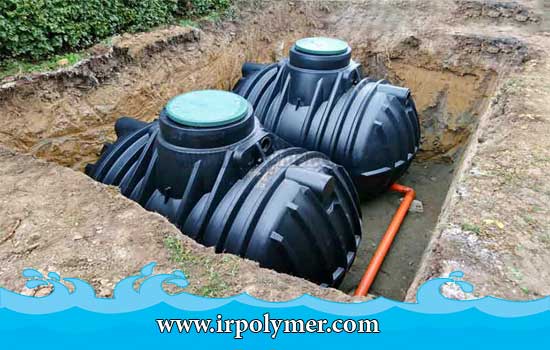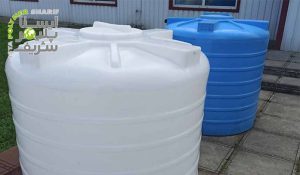The execution and construction of buried polyethylene tanks is a highly specialized service provided by ABtank and must be carried out by a professional team. Polyethylenes have a wide range of applications globally. One of their uses is the construction of various tanks for storing water, food products, and chemicals. The non-reactivity of these plastics, their low weight and lightness, and their suitable formability during the process are notable features. Due to their light weight, they are easier to transport and cost less. Their non-reactivity ensures excellent quality of the stored water over time. Their resistance to corrosion and rust increases their longevity and makes them cost-effective.
Types of Buried Polyethylene Tanks
Polyethylene tanks come in various types, including:
- Horizontal tanks
- Vertical tanks
- Rectangular tanks
- Under-stair tanks
- Cone-shaped tanks
- Single or multi-layered tanks
- Buried tanks
Advantages of Buried Polyethylene Tanks
This article will introduce buried polyethylene tanks and their benefits. Generally, buried tanks must withstand dynamic loads and pressure from the surrounding soil, in addition to gravitational pressure. If the liquid inside these tanks needs to be extracted, a pump is required. The higher the desired liquid output speed, the more powerful the pump must be. There are no specific limitations in the construction and design of these tanks. Since these tanks are installed under parks, airports, or other locations, they do not require a dedicated space. These tanks have the advantage of being movable and capable of emptying their contents.
It is important to ensure that each tank has sufficient resistance to withstand applied forces without deforming. In other words, buried tanks have adequate rigidity. They are modular and multi-piece. For drinking water tanks in these tanks, sanitary and food-grade materials must be used. However, for storing acids and bases, the tanks must be highly resistant to corrosion and not use food-grade materials. In fact, these tanks will ultimately be less expensive compared to stainless steel tanks.
Installation and Construction of Buried Polyethylene Tanks
The type of soil, depth, and the intended location must be assessed by the relevant experts. For installation, a pit must be dug with a diameter of the tank plus 50 centimeters. Then, concrete is poured, and the tank is filled with liquid. This simultaneous concrete pouring and water filling are done to equalize the pressure inside and outside the tank. Mechanical resistance of the tank must be considered. A manhole is one of the requirements for polyethylene tanks.
Essential Features of Buried Polyethylene Tanks
The tank must be durable, have certification for relevant standards, allow for re-installation, have the possibility for volume expansion in its design, and be capable of horizontal or vertical installation and burial up to significant depths of around 12 meters.
Overall, buried tanks are used for storing water underground without occupying space. Due to being buried underground, they must have high compressive strength and high chemical resistance. The smooth internal surface of polyethylene, chemical non-reactivity, and light weight are features that are highly valued by manufacturers and consumers.






